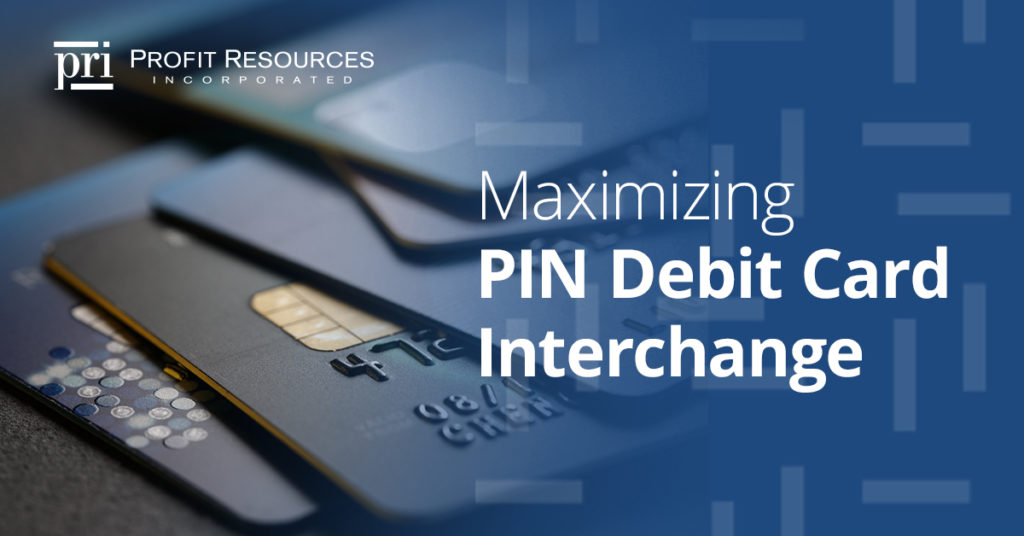Do you need a PIN network? And does it really matter which one you select? Yes! You do, in fact, need two PIN networks, and it does matter which you select … if you are interested in maximizing profits.

All PIN networks have the same basic function of processing transactions with or without a PIN at the point-of-sale, and they have several things in common:
- All process PIN, PIN-less, online bill-pay, e-commerce and ATM transactions.
- All are safe, secure and accepted everywhere in the U.S.
- All are real-time.
- All process every payment channel: in-person, online and mobile.
- All have fraud risk prevention, good approval rates and allow cash back.
However, there are some important differences in PIN networks. Knowing these differences and how they affect your financial institution’s profitability should influence your selection.
- Not all have favorable income to the issuer. The gross and net interchange rates earned can vary wildly.
- Not all have transparent fee structures and not all fee structures are created equal. Some are much more costly.
- Not all have useful data analytics. The best networks can provide clear, comprehensive reporting on interchange.
- Not all allow clean-back plastic (no logo), which is desirable and quite frankly, should now be universally expected.
- Not all are happy just routing their share of your PIN transactions. Some networks are now rerouting transactions that would have required a signature and been routed to Mastercard or Visa. They are even selling this practice as a good thing to their issuers. (Pssst … it’s probably not a good thing for your income!) Additionally, if the FI has an agreement with Visa or Mastercard and its PIN network begins taking signature transactions, it will impact incentives and quite possibly trigger penalties.
Merchants benefit from PIN over signature transactions
Remember the old merchant payment question, “Credit or Debit?” meaning PIN or Signature (SIG)?
National retailers lobbied to control the transaction routing choice so they could route as many transactions as possible to a PIN network instead of SIG, which reduces their processing expenses. The higher their volume, the lower their fee from the PIN network. The lower the cost from the network to the merchant, the lower the interchange coming back to the FI as the issuer. PIN transactions are desirable from the merchant’s perspective because they settle more quickly than signature transactions, and the merchant is more protected from chargeback.
Who owns/operates your PIN Network?
Is it owned/operated by your core provider and/or EFT processor? Is it owned by Mastercard, Visa or Discover? Why should you care? National retailers also lobbied to get the “multiple network” requirement added to the Durbin Amendment, so they could have more choices for routing. What this means to the FI is that the network of the card brand may be forced upon you, but the other network is entirely up to you (not the EFT processor). An FI’s choice of their other network is critical to the overall interchange rate it earns. All networks couple differently due to acquirer/merchant routing choice favoritism, and some will earn top rates for the FI.
PRI’s debit card interchange consultants are experts at best coupling networks for maximum debit card interchange income. FIs can enter into an agreement with any PIN network they choose, and there is no downside to making a change. And when it comes to profitability, the switch is well worth the effort.
Profit Resources specializes in identifying profitability improvement areas for financial institutions through revenue growth, cost control, streamlining processes, and effective use of technology. Contact us to learn more about our personalized approach to propel growth and improve profitability.
Other Recent Articles
- Community Banking Month: How Peoples Bank is Strengthening Their Community
- AI and Automation in Community Banking
- Keeping The Community Bank Feel as You Grow
- The Human Touch in Digital Banking: Balancing Automation and Personalization
- Future-Proofing Financial Institutions: Navigating Trends, Technology, and Strategic Innovation
- The Power of Curiosity in Process Improvement Strategy
